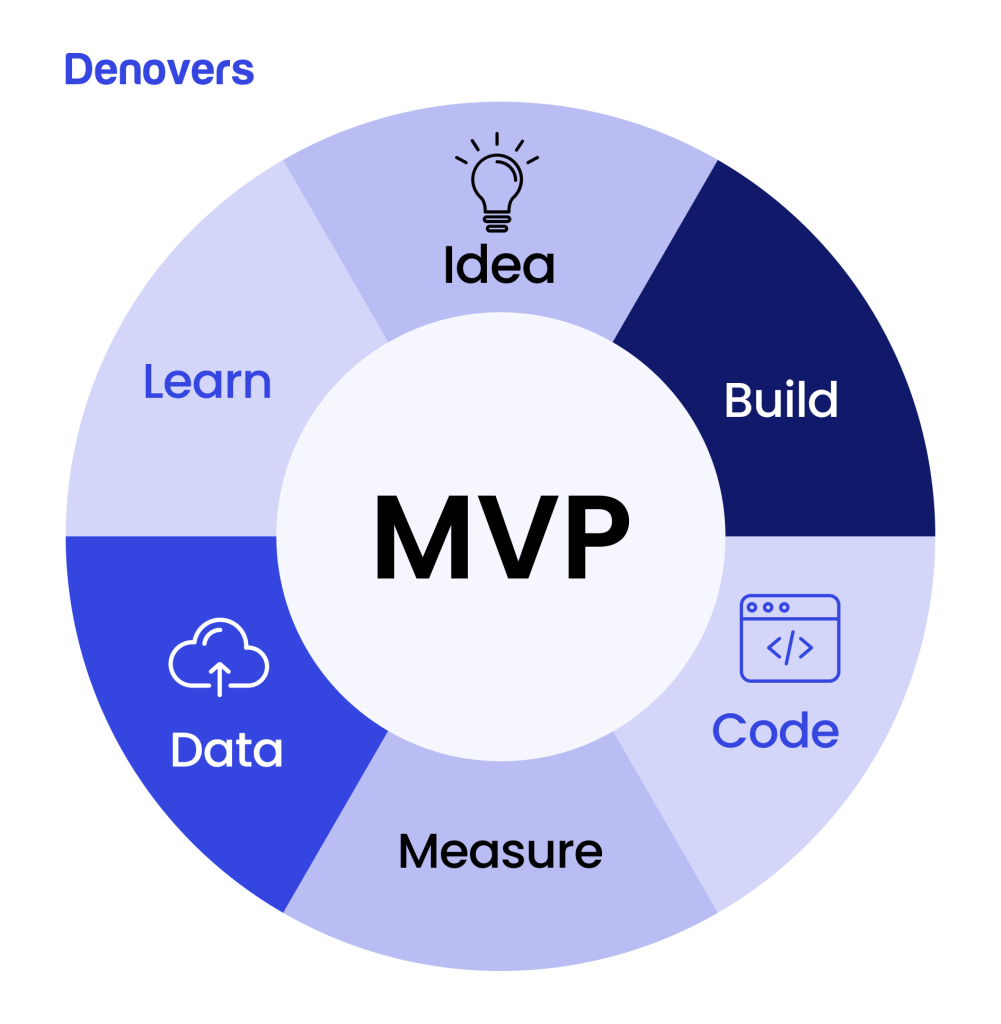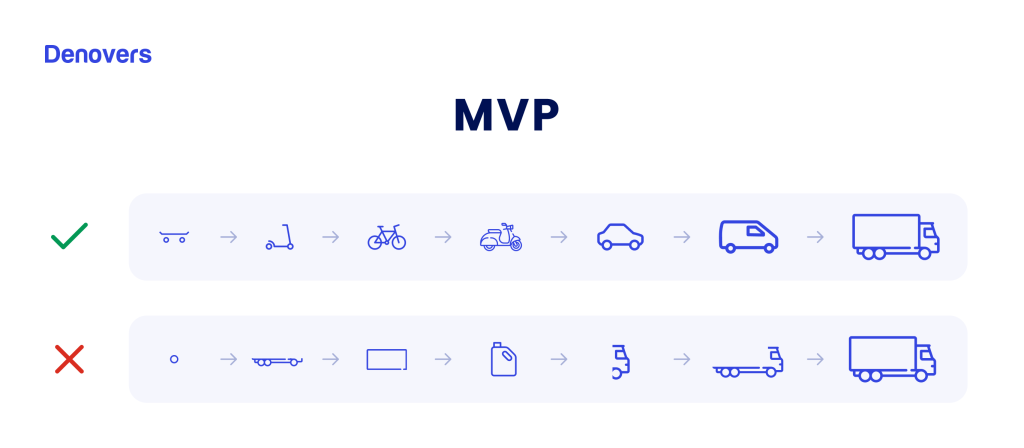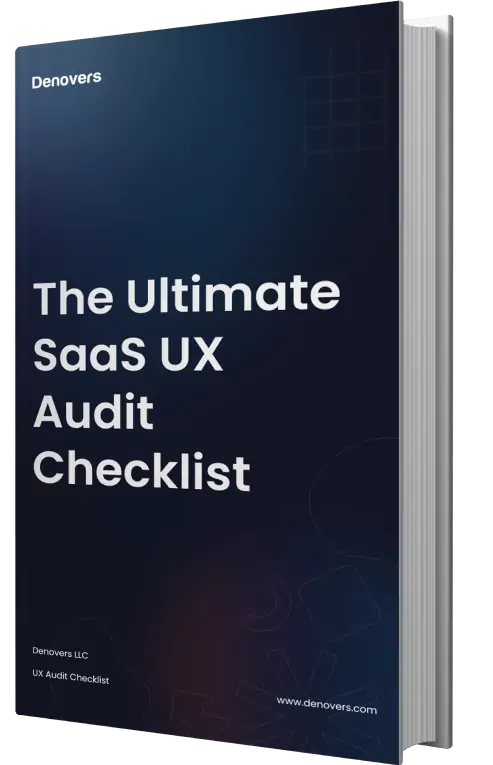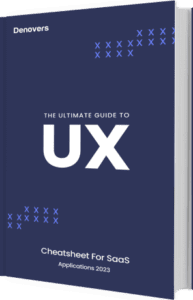What’s your biggest fear holding you back from conducting a thriving business? We believe a business’s excessive risks prevent you from leading commercial operations. But what if we told you there is a way to minimize risks and maximize business success? This is where the minimum viable product checklist comes in to create an outcome according to your user’s needs and preferences. A minimum viable product makes it easy to do business by preventing huge losses by creating products no one wants.
Do you want to know what an MVP is and how to create one? Stay put as we are about to share the steps in this blog’s minimum viable product checklist to enlighten you about the essential steps required to create this business-effective product.
Let’s get started.
What is an MVP?

A Minimum Viable Product (MVP) is an early-stage product with just the basic usability features that meet the user’s requirements. This developing product encompasses the minimum features required to use. These are baseline characteristics for applications or software that will later be fully launched into the market.
An MVP is created and introduced in the target market so that its testing can be done to receive honest customer experience and review. This feedback is then used and analyzed by designers to incorporate it in the development of the final product through maximum iterations. The main idea behind creating this model and doing MVP testing is to get real-time insights to develop a full product version.
Why do you need an MVP?
It has been estimated that 29% of tech companies are now aggressively investing in innovative and effective product development strategies. One such emerging technique is following the Minimum Viable Product checklist steps to create the final outcome’s basic model.
Are you thinking, why are companies excessively moving towards the MVP approach? This is because of the various benefits it brings to their businesses. Let’s have a look at some of them.
Faster Time-to-Market
The Minimum Viable Product checklist launches business products quickly as they focus on just the essential features. This helps businesses get some revenue on their product even before the finalized, fully functional product exists.
Cost-Effective Development
MVP testing significantly reduces business costs as companies can test their concept and gain insights without investing heavily in features that may not be essential or well-received by users.
User Feedback and Validation
The MVP approach allows businesses to get their hands on real-time feedback from users, which is super important. The valuable reviews of customers help you refine your product based on actual user experience as you know their exact needs, preferences, and pain points.
Risk Mitigation
Through MVP testing, businesses can spot potential challenges and risks early in development. As a result, you can make the necessary adjustments and improvements before significant resources are invested. Moreover, the ongoing fear of product failure and losses is also eliminated as you do not directly create the final version of the product, which requires heaps of cash.
Iterative Development
The iterative nature of the MVP approach allows for continuous improvement. After considering the user’s feedback, the developers can create the final outcome through the Minimum Viable Product checklist. This ensures that informed decisions are made to develop products that align with user expectations and market demands.
Resource Optimization
This viable solution allows companies to allocate resources more efficiently as they only focus on a minimum set of features. Teams can concentrate on core functionalities and avoid unnecessary work on features that may not add significant value to the end product.
Early Market Entry
Product developers get a competitive edge as they can quickly launch an MVP into the market. This way, they can build a strong presence by creating brand awareness and capturing early adopters.
Enhanced Product-Market Fit
Businesses can refine their product through continuous iterations due to feedback. This iterative process increases the likelihood of achieving a strong product-market fit.
Customer Engagement
The greatest gain of using the minimum viable process is that a sense of engagement and ownership runs throughout the development process as you start involving customers. Users who shape the product by giving their feedback are more likely to become loyal customers, which is no less than a milestone for your business.
Focus on the Core Value Proposition
Using the Minimum Viable Product Checklists to create effective prototypes helps businesses prioritize and focus on the core value proposition of their product. This clarity helps deliver a more streamlined, effective solution that resonates with users.
Practical Steps in the Minimum Viable Product Checklist’

It has been estimated that 90% of startups fail because they are unaware of utilizing an MVP to create products that customers love. We don’t want that for you. As a result, we are here to share the constructive steps required to create an effective MVP for your business. Let’s have a look at them.
Step 1: Define the problem the MVP will solve

The first step listed in the Minimum Viable Product checklist is to state the problem for which the MVP is being created to solve. Thoroughly describe the situation that users currently face. After that, introduce your Minimum Viable Product and describe it in a few lines. Throw light on how your viable solution will solve the pressing problems of users and address their needs. This will give your team direction to create a Minimum Viable Product prototype that resolves the users’ problems. Moreover, it will also be helpful for you in the future to create a unique selling point, landing pages, and different advertising campaigns.
Step 2: Find your target audience
It has been estimated that 42% of businesses fail as their products don’t have a market. They fail to research their target audience as they believe that their product will cover the problems of a wide audience. However, this is not how it works.
You should focus on a particular audience and take your minimum viable process approach accordingly. Take as much time as you need to find your target audience that perfectly aligns with your business offerings. This is way better than spending heaps of cash on advertising and still getting a minimum conversion.
Once you’ve found your target audience, it’s time to dig deeper into them to create a user persona. This includes researching their ages, social status, income, likes, dislikes, and even the equipment they use. You should also pay special attention to the problems they face. This helps you create a viable solution that fulfills users’ needs and gives you ideas to successfully market the product as you know your target audience inside out.
Step 3: Research your competitors

Several businesses fall apart initially as they fail to consider their rivals. It is important to keep a sharp eye on your competitors so that you don’t end up missing the latest market trends. Moreover, it is highly unlikely to have a unique idea. Therefore, it is important to research your competitors to develop a unique idea to stand out in the challenging market.
Determine your top competitors and start gathering essential information like their
- Strategies
- Activities
- Websites
- Presentations
- Ads campaigns
- Annual reports
- Reviews
- Sales Volume
- Profitability
Extracting this essential data will give you insights into how to beat your competitors and emerge successfully in the competitive SaaS industry.
Step 4: List long-term future goals

While conducting research, you will come across several additional features that could benefit your user but cannot be incorporated into your Minimum Viable Product checklist. However, this does not mean that you have to eliminate them altogether. Record them in a list so they can be implemented to refine and enhance your product further.
Step 5: Think like your users

It is highly essential to keep your users perspective in mind throughout the product development. This enables you to create super user-friendly products. Therefore, during the minimum viable process, ask yourself questions like
- How will different users interact with the product?
- What goals do the users have while using the product?
- What possible challenges could arise for the user while using different product interfaces?
- In what environment will the user be using the product?
Step 6: Create a user journey map

After doing the relevant research and data collection, it’s time to move to the essential minimum viable product stages, including creating a user journey map. This will make you aware of the exact experience the user will have on your designed product. Suppose you want a highly functional and easy-to-navigate application. In that case, you must test the product on yourself first to understand its usability. Keeping your target audience’s expectations in mind, you can thoroughly go through the user journey map and fix it accordingly.
Step 7: Ensure the experience is simple

An important aspect that should definitely be in your Minimum Viable Product checklist is to ensure that you keep the user experience of your product as simple as possible. This is paramount as the users will be new to your product and have no idea about its offerings. Adding a lot of processes will make it complex for them to complete their journey.
Therefore, keeping a simple MVP strategy would result in creating an easy-to-use product. This would significantly increase your product’s engagement. Moreover, you can easily add more features to your product in the final version; your users will be familiar with its concept and deliverables.
Step 8: Outline the MVP’s characteristics

It’s time to define the features of your MVP to explain its functionality and capacity. Start by stating the application’s or software’s core characteristics, without which the product would fall flat. This is known as the wireframe of the product. Moreover, you can also list essential features that you would like to include in your product to ensure it is no less than a viable solution.
While deciding the features, it is essential to understand which ones you would like to implement one or more and which should be implemented in the future. The project management workers should develop various features to be included in the Minimum Viable Product prototype to know its ideal range.
Step 9: Develop the Minimum Viable Product prototype

Once you completely understand the user’s experience with your product, it’s time to start implementing your MVP strategy to develop it. From the product’s goals and tasks to its optimal capacity and scope, incorporate every relevant feature and information you have taken out for your MVP.
Step 10: Test the MVP

The final step in your Minimum Viable Product checklist is to test your MVP to know its performance. Once your product is ready to launch, it’s beneficial to give its complete access to your team members and let them use it for some days. This way, you can fix any last-minute errors and act up before the product is live.
This is followed by launching the product to the first users. After a few days of MVP testing, start gathering your MVP’s valuable reviews, ratings, feedback, and user behavior. After analyzing the collected data, begin incorporating the relevant changes to fix and fine-tune your product for exceptional performance and user-friendliness.
Examples of Successful Minimum Viable Products
There are several giants today who started off as MVPs but have now become thriving products in the competitive application sector. Let’s look at four of the most common examples of products we use daily.
The founder of Instagram, Kevin Systrom, initially made an MVP to see how it performs. Back then, the Minimum Viable Product prototype enabled users just to share pictures and apply filters. Within weeks, the MVP received excessive recognition, which turned into a full-time performing product with innovative features like posting, tagging, business profiles, telecast, hashtags, live stories, messages, telecast, and much more. Initially just an MVP, this product has an exceptional success story as Instagram users are expected to hit 1.4 billion worldwide in 2024.
Airbnb
In 2008, three creative enthusiasts, Brian Chesky, Joe Gebbia, and Nathan Blecharczyk, devised an effective idea to make traveling easy. They created an MVP to test the idea of renting their apartment by fax. Their project showed that this service would be in high demand, which gave birth to what we call AirBnb today. This site has now become one of the largest short-term rental housing sites.
Spotify
In the 2000s, unlike pirate sites, Daniel Ek and Martin Lorentzon were two out-of-the-box thinkers seeking a solution for unrestricted music downloading. This is when they created an MVP to offer music streaming services just to their friends and family. Surprisingly, the idea became successful, and they co-founded Spotify to offer the same service to a larger audience. Spotify now has around 422 million global users for on-demand music, video, and podcast streaming.
Dropbox
The founder of Dropbox, Drew Houston, came up with the idea of a prototype for storage. He created an MVP, which included just a video of how the product would work, and after posting it, he got millions of sign-ups just for the idea. This is how he turned that prototype into an actual user-centric platform using the Minimum Viable Product checklist.
Get Your Minimum Viable Product From Denovers
Are you looking for expert engineers and product developers to create a user-centric MVP for your business? Let us handle it. Denovers is home to several diverse UX/UI product developers and designers who create viable solutions of your dreams.
We adopt an on-point MVP approach to hook the user on your business prototypes by ensuring they align with their unique needs and preferences. Our experienced design team will thoroughly collaborate and advise you on creating MVPs that not only inform you about how the user interacts with your business offering but also offer long-term gains of efficiently marketing the final version to your target audience.
Bottom Line
MVPs are no less than compasses that guide you in creating an application or software that perfectly aligns with your target user’s needs. These powerful tools offer real-time user feedback, which you can implement to make flawless products.
MVPs promote iterative enhancements based on UX and encourage continuous improvement and updating according to the latest customer needs and industry trends. Using the Minimum Viable Product checklist, you can develop error-free business platforms that resonate significantly with your target audience, increasing sales volume and profitability. Top of Form
FAQs
How many types of Minimum Viable Products are there?
There are two main types of MVPs, including low-fidelity and high-fidelity. The first ones are simple, and they don’t require much development. Their primary goal is to understand customers’ problems to offer a solution. Meanwhile, the latter requires complex development, as their primary goal is to know whether the customer is ready to pay for your solution.
What are common challenges in building an MVP, and how can they be overcome?
Several changes can cross your way during MVP development creation, such as limited resources, scope creep, and unclear product vision. To overcome these, you should strictly follow the essential steps of your Minimum Viable Product checklist, which include focusing on the core features, leveraging lean development methodologies, and continuously considering user behavior to implement essential feedback.
How do you determine the target audience for your MVP?
You can determine your Minimum Viable Product prototype’s target audience by conducting market research to identify potential users who face the problem your product solves. Record your target user’s essential information in your Minimum Viable Product checklist, such as their behavior and preferences.
What role does market validation play in the MVP process?
Market validation is crucial for ensuring there’s demand for your product. Before building the MVP, conduct surveys, interviews, and competitor analysis to validate the market need. Use this information to refine your product concept and tailor your MVP to address specific pain points, increasing the likelihood of market acceptance.






